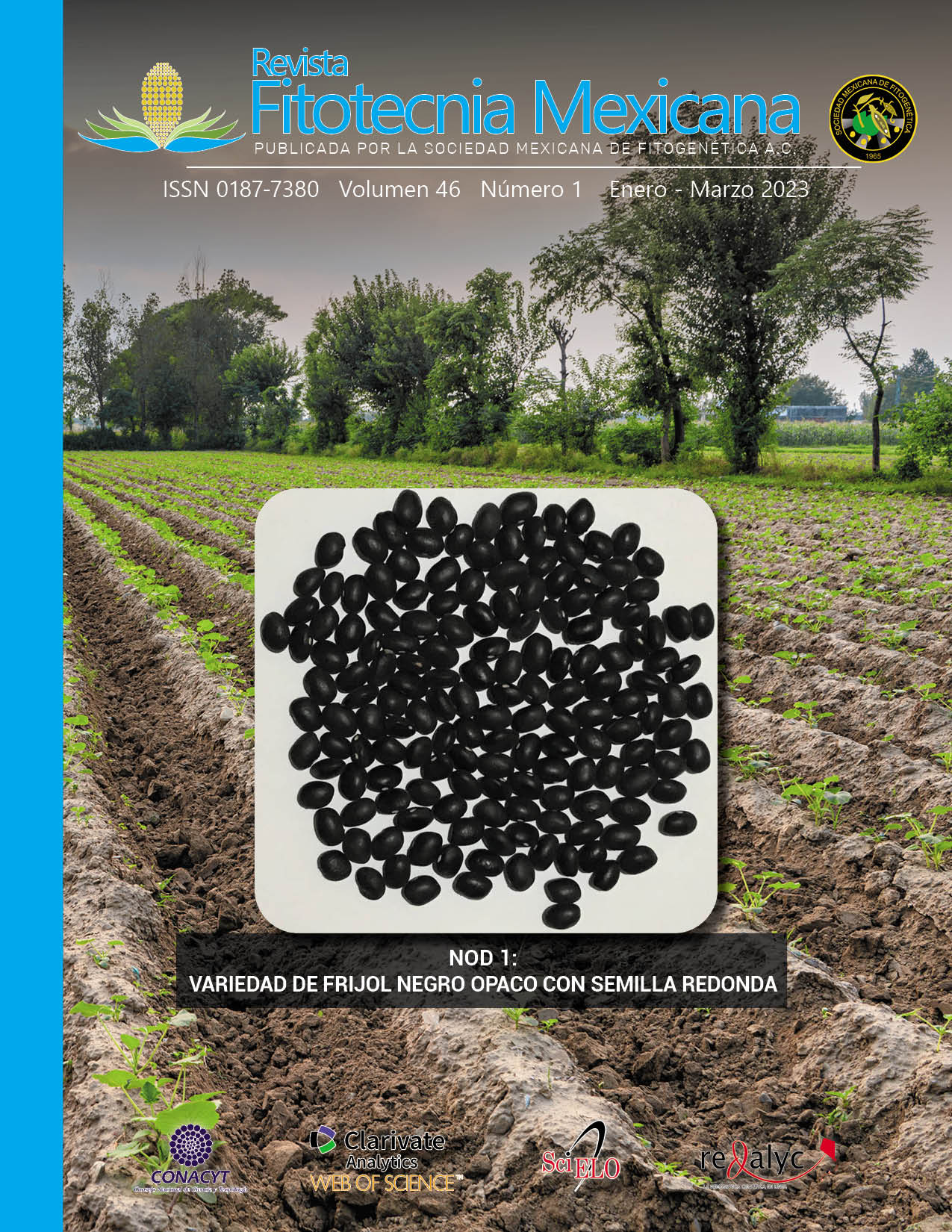PRODUCTIVE PERFORMANCE OF SALCER SOYBEAN VARIETY AT DIFFERENT PLANT DENSITIES AND HARVEST TIMES
Main Article Content
Abstract
Soybean [Glicyne max (L.) Merr.] is a high-quality forage resource, due to its nutritional characteristics and biomass production, but its adoption and establishment in grasslands are limited due to little knowledge about agronomic management. This study aimed to evaluate the production potential and morphological characteristics of soybean cv. Salcer at differentplant densities and age at cutting in dry tropic conditions. Four plant densities were evaluated: 250,000, 125,000, 62,500 and 41,250 plants ha-1 every eight days from 30 to 75 days after germination, under a randomized complete block design with three replications. Forage production, growth rate, plant height, leaf:stem ratio, intercepted radiation and morphological composition were evaluated. Forage yield was higher at high densities than at low densities with 4462 and 2958 kg DM ha-1, respectively (P ≤ 0.05) with 250,000 and 41,250 plant ha-1. There were no differences between densities for the leaf: stem ratio (P > 0.05); in regard to cutting age, the highest values were obtained with an average higher than 1 on days 30 to 52 (1.93 and 1.20) on days 30 to 52. Soybean intercepted more radiation at day 60 (82 %). Plant density and age at cutting are determining factors in dry matter yield in forage soybeans, where densities of 250,000 and 125,000 plants ha-1 performed better, and cutting between 52 and 60 days is recommended.

